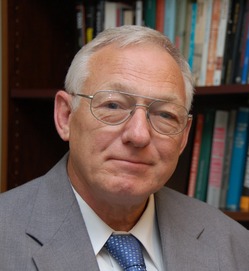Pick for mine safety chief signals new day for enforcement
 The U.S. Senate last week confirmed by unanimous consent Joe Main as the new head of the Mine Safety and Health Administration -- an appointment that represents a dramatic departure from the agency's coziness with the mining industry during the Bush administration.
The U.S. Senate last week confirmed by unanimous consent Joe Main as the new head of the Mine Safety and Health Administration -- an appointment that represents a dramatic departure from the agency's coziness with the mining industry during the Bush administration.Main previously worked for 22 years as director of occupational health and safety for the United Mine Workers of America, whose International President Cecil E. Roberts issued a statement congratulating Main on his confirmation:
We sincerely believe that Joe's long experience as an advocate for miners' health and safety on the job will bring a refreshing change to an agency that for too long has favored production over strong enforcement of workplace safety and health in America's mines.Main was with the UMWA through 2004, when he went on to work as a mine safety consultant based in Spotsylvania, Va.
The head of MSHA under President Bush was Richard Stickler, who worked for BethEnergy Mines Inc. for over 30 years and who from 1997 to 2003 directed the Pennsylvania Bureau of Deep Mine Safety. It was during that time that the Quecreek mine disaster occurred in that state, in which nine coal miners were trapped for 77 hours after breaching an abandoned, water-filled mine. A grand jury later determine that Stickler's agency should have noticed mapping problems that contributed to the disaster.
Stickler's 2005 nomination to head MSHA had faced significant opposition in the Senate, with Sen. Jay Rockefeller (D-W.Va.) noting that the mines Stickler oversaw had a rate of preventable accidents three time the national average. After the nomination was twice returned to the president's desk unapproved, Bush finally placed Stickler in the job via a controversial recess appointment.
Stickler went on to face more controversy over his role in coordinating the effort to rescue six coal miners trapped by a collapse at the Crandall Canyon Mine in Utah in August 2007. Along with the miners, three rescue workers were killed and six others injured during that operation. The Department of Labor later criticized Stickler for how he handled the rescue effort.
From 1996 to 2009, there were a total of 443 fatal accidents in U.S. coal mines, according to MSHA data. West Virginia led the way with 131, followed by Kentucky with 117 and Alabama and Virginia both with 37.
(Photo of Joe Main from the Charleston (W.Va.) Gazette.)
Tags
Sue Sturgis
Sue is the former editorial director of Facing South and the Institute for Southern Studies.
